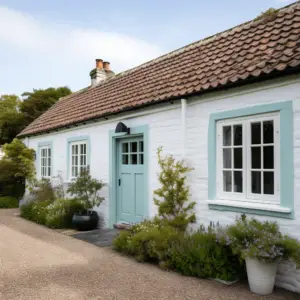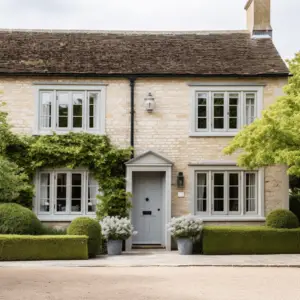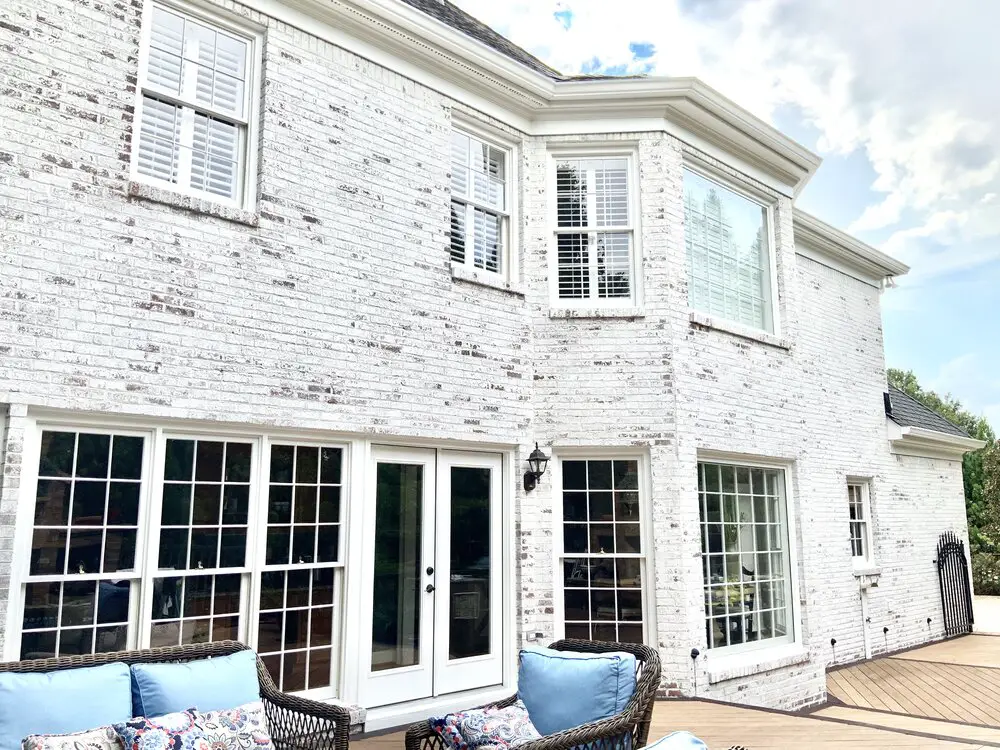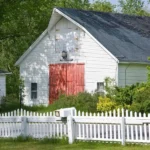Painting your home adds appeal, raises its value, shields it from natural elements, and aids in damage repair. You have two options for painting your house: limewash or paint. But which one is superior to the other?
Limewash is much less complicated than regular paint; it has fewer ingredients than typical paints, whose ingredient lists often resemble a lengthy essay in a difficult-to-read font.
Limewash has a gritty texture and should be applied to porous, toothy surfaces that won’t react with the lime’s extremely high pH level. Additionally, it is much thinner than paint and more resembles whole milk than conventional paint.
Your best exterior paint can completely cover the surface of bricks and other porous materials. However, limewash permeates into these surfaces when applied on them rather than drying and adhering to them, giving a matte, chalky feel after it has dried. This absorption creates the ideal wall texture for your interior design.
Table of Contents
Is it Affordable to Limewash or Paint?

Compared to paint, limewash is a far more affordable material. Limewash can be made by purchasing hydrated lime and mixing it with water on your own. Additionally, lime will completely cover an average-sized home for about $50. Water is also free.
Paint costs ten times that amount. The brushes you use are the same, but you don’t frequently use a roller or sprayer while applying the limewash.
Generally speaking, limewash is less expensive here in terms of labor costs. When using paint, everything will need a thorough and complete coat. There shouldn’t be any indication of the porous surface hues. The final step in a brick painting project is a brush-over; every little crack and hole on the porous surface must be fully covered during the brush-over. It costs money and requires time to do this.
With limewash, none of this is necessary because the coverage is meant to be spotty, and you want to be able to see the color of the brick or the porous surface you are painting through it.
The preparation is another area where limewash is less expensive than paint. If you’re spraying paint, you’ll need to tape all the windows and doors, costing you money for both the labor and the supplies.
With limewash, none of that is done. In actuality, there is hardly any preparation. Limewash has a rougher surface than paint, which is much more precise. A home that has been limewashed isn’t supposed to appear as flawless as a painted brick.
Limewash also outperforms paint in terms of long-term value. Both techniques eventually need to be reapplied, although limewash is less expensive to reapply.
Related Questions
How Long Does Limewash Last?
Every 5-7 years, it’s generally advised that you reapply limewash. However, this varies. The original layer’s thickness, the weather, the brick you limewashed, and other factors all play a significant role.
Some limewash coats survive 20 years and still look good. It’s a good idea to eventually reapply the limewash since it helps maintain the brick, though it’s not always necessary for aesthetic reasons.
Instead of one thick layer, limewash is typically applied in multiple thin coats that pile up. You can easily go over 10 to 15 years without needing a new coat if you apply it correctly and use the right amount of lime in your mixture.
Because limewash is chalky, sometimes it can rub off the surface. If there are any locations where the limewash rubs off, a spot repair may be necessary much sooner.
If you limewashed brand-new brick that doesn’t require additional protection, you could delay reapplying limewash for a longer period. However, if you used limewash to preserve older brick from the elements, you’ll need to reapply it much sooner. In this situation, you should adhere to the recommendation of 5-7 years.
Does Limewash Work on Painted Brick?
No. Brick without paint is typically the only surface to which limewash adheres. You can attempt to remove as much paint as possible in the hopes that there will be enough exposed brick for the limewash to adhere to. However, limewash often only adheres to exposed brick.
How Many Limewash Coats Are Required?
Unlike traditional paint, limewash is unique. Over multiple thin coatings, it thickens. The application is purely decorative and isn’t designed to cover the brick entirely. Because each application is unique, you require a person with usage knowledge of limewash.
You should apply at least 2-4 layers to provide the wall with the best protection. Keep in mind that limewash offers a protective layer to the wall in addition to being decorative. However, once you’ve applied the required minimum of 2-3 coats, you can apply more to get the desired effect.
Can You Use A Roller To Apply Limewash?

You can apply the limewash with a roller, but a brush works better. Apply multiple light layers, one at a time, until the desired effect is achieved.
Limewash isn’t like paint. If you’re painting it over brick, you should not attempt to cover every brick completely and equally. Some bricks should have less coverage than others, and some brick colors should be visible. It’s an artistic technique and should be carried out exclusively with a brush.
Can You Make Limewash on Your Own?
Making your limewash at home is the most economical option. Making lime putty is a straightforward technique that starts with hydrated lime, diluted with water until it has the consistency of thick cream. To enhance color, natural pigments are used.
What shades Does Limewash Come in?
Limewash is off-white in its purest state. Natural, alkali-resistant pigments that come in shades determined by what the earth has to provide are added to create color. The usual colors are taupe, gray, and brown.
Remember that once limewash dries, it gets much lighter. Testing colors is crucial since they can be up to 10 times darker when wet. The number of coatings needed to achieve the desired opacity varies; normally, up to three coats are advised.


